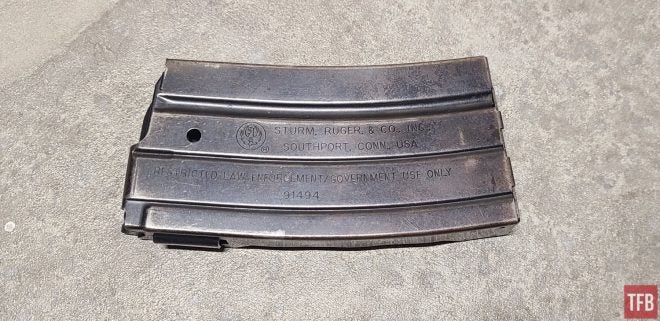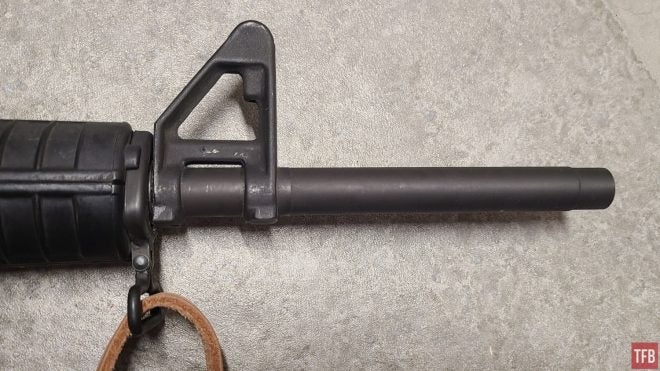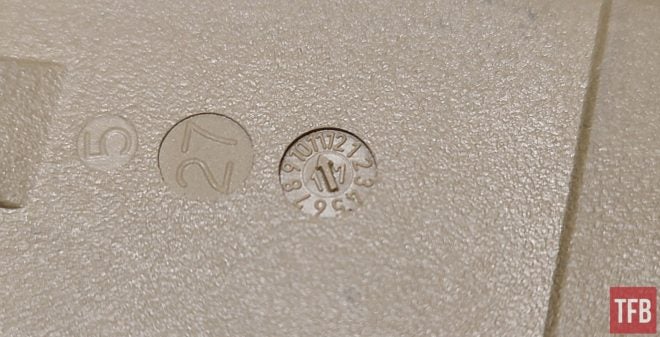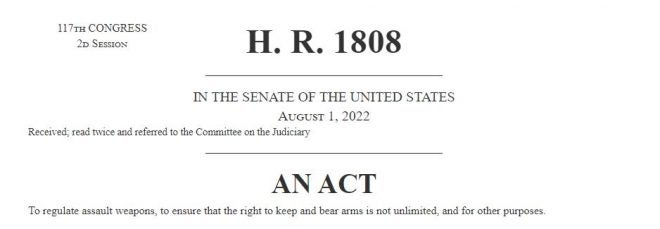Yet again, an “assault weapons ban” has been proposed in the United States. HR 1808, the Assault Weapons Ban of 2022, has passed the House of Representatives and been sent to the Senate. What is in this bill, and how would it work if it were passed? Well, dear reader, let’s take a look at the bill and how it both compares and differs from the 1994 Assault Weapons Ban.
More Legal Coverage @ TFB:
- SIG Sauer Files Lawsuit Alleging P320 Misrepresentations By Attorney
- Lawsuit Alert: Springfield Armory v. EAA
- Springfield Responds to SIG SAUER’s Magazine Patent Lawsuit
- Glock Prevails in Lawsuit After More Than Six Years
- Legal Analysis – 2022 Supreme Court Gun Cases Explained

(Image via C-SPAN)
Before we dig into the nuances of this bill, yes, we know that “assault weapon” is not a real term. Assault rifle is a real phrase. Assault weapon is not. But we are more or less forced to use that phrase because that is how the bill defines them. Also, we will abbreviate the assault weapon ban as AWB for the sake of brevity.
1994 Assault Weapon Ban Recap
I got into guns as a kid, and the original AWB was the law of the land as I was learning the ins and outs of the gun world. The 1994 AWB prohibited the manufacture (and sale to the civilian market) of magazines holding more than ten rounds. So-called “high capacity magazines” were still manufactured for law enforcement, military and export purchasers. When the ban ended, these magazines became fully transferrable again, and magazines with restricted marking can still be found today.

Ruger Mini-14 magazine with a 1994 manufacture date, stamped “RESTRICTED LAW ENFORCEMENT/GOVERNMENT USE ONLY”
Firearms were also regulated in various ways. A large number of guns were banned by name and model. Also, any semiautomatic rifle with a detachable magazine, and with two or more restricted features, would be classified as an illegal assault weapon. Those restricted features included: (i) a folding or telescoping stock, (ii) a pistol grip that protrudes conspicuously beneath the action of the weapon, (iii) a bayonet mount, (iv) a flash suppressor or threaded barrel designed to accommodate a flash suppressor, and (v) a grenade launcher. Similar lists of features existed for pistols and shotguns, with minor differences (such as a magazine well located outside the grip of a handgun or a magazine tube holding more than 5 shells on a shotgun).

The muzzle end of a ban-era AR-15, which has the bayonet lug removed, and an unthreaded muzzle
In practice, this meant that most of the guns targeted in the ban were still produced and sold, but with different model names and slightly different features. Rifles frequently had muzzle brakes permanently attached in lieu of flash hiders. Bayonet lugs were ground off, and thumbhole stocks were used so that the pistol grip would not protrude conspicuously.
Critically, owners of assault weapons and high-capacity magazines were allowed to keep what they already possessed when the ban went into effect. This drove the prices of “pre-ban” magazines and guns to extraordinary heights. I recall seeing standard magazines like those for a Glock 17 or AR-15 selling for $100 at gun shows. This is your reminder to buy more magazines.
Similarities between 1994 and 2022
HR 1808 broadly follows the contours of the 1994 AWB. Semiautomatic pistols, rifles, and shotguns can be designated as assault weapons by name, or by features. The lists of features that make an otherwise normal gun into an “assault” gun bear many similarities. The list of firearms banned by name is actually the list from 1994, but with more models added. Curiously, this includes many guns which are long out of production (e.g. SIG PE-57) or already banned from import on other grounds (e.g. Norinco AK models).
Magazine capacities are regulated under HR 1808 as well. This time, they are called “large capacity ammunition feeding devices” (LCAFD for short). Magazines produced after the bill becomes law must be marked with a date, as in the days of the 1994 AWB. Most magazines are already so marked, so it will be easy to prove that a magazine existed prior to the ban.

Have you ever noticed these marks on a magazine? This Magpul PMAG M3 was made in November 2017, which can be read in the small circle with a “17” around the arrow, which points to the month of manufacture.
Differences between 1994 and 2022
The arbitrary limit on what is an LCAFD is higher in the 2022 bill than in the 1994 law, increasing from 10 to 15 rounds. Many popular guns like the Glock 19 and SIG Sauer P365XL would still have standard capacity magazines available. Anyone stockpiling magazines in anticipation of an upcoming ban should probably focus on magazines holding more than 15 rounds.
A critical difference between 1994’s AWB and HR 1808 is the counting of features that constitute assault weapons. HR 1808 only requires one feature from a defined list to classify a semiautomatic gun as an assault weapon. For rifles, the list is expanded to include a forward grip, a “barrel shroud” which seems to be targeted at AR-15 handguards, and any stock which has size adjustments to reduce any dimension (which might even include a Magpul PRS stock). It is very easy for this section to be triggered.
Pistols receive similar treatment. A second pistol grip creates an assault weapon under HR 1808, but this is redundant with the National Firearms Act, which has already defined such a firearm as “Any Other Weapon” and subject to a $5 tax stamp. Pistol braces and buffer tubes also create an assault weapon, if they are designed or redesigned to facilitate shoulder firing. This definition ties in to the ATF proposed rule on pistol stabilizing braces, which uses a scoring sheet to tally up whether a pistol is a pistol or an illegal SBR.
One of the most worrisome parts of the bill is new in this version. It states that “Any part, combination of parts, component, device, attachment, or accessory that is designed or functions to accelerate the rate of fire of a semiautomatic firearm but not convert the semiautomatic firearm into a machinegun.” is a banned assault weapon. This is probably targeted at parts like bump stocks, but could easily include triggers with short reset or changed gas system parts. I am sure the ATF would surprise us with creative interpretations and applications of this section.
There are many other differences that could each be their own article, but this article is already too long. HR 1808 would also ban all belt-fed firearms because they can easily circumvent magazine limits. All transfers of grandfathered assault weapons would be required to pass through an FFL. They also must be stored securely so that they cannot be accessed by prohibited persons.
Conclusion
What are the odds that HR-1808 becomes law? I would guess 80/20 odds that the bill does not pass. However, that is just a guess based on the existing filibuster rule. If the Senate does away with the filibuster then the odds of passage increase substantially. The Senate is divided 50-50 (with the Vice President casting a tiebreaking vote), and there are Senators from both parties that may vote across the aisle. We will be sure to keep you posted on any major news regarding the bill.
This article is an opinion piece written for general education purposes and is not legal advice. This bill is not yet law, and, if enacted, it may differ from the current text. Please consult competent legal counsel for advice on your particular situation.
 Your Privacy Choices
Your Privacy Choices
